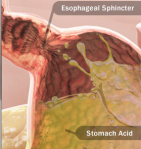Keep Safety in Mind with Children’s Gifts
December is National Safe Toys and Gifts month. According to the U.S. Consumer Product Safety Commission an estimated 226,100 toy-related injuries were treated in U.S. hospital emergency rooms in 2018. Almost half of those incidents were injuries to the head. Unfortunately, most of these injuries happen to children under age 15.1 Since so many children’s accidents are related to the eye, the American Academy of Ophthalmology provides a list of tips for choosing safe toys.2
- Avoid purchasing toys with sharp, protruding or projectile parts.
- Make sure children have appropriate supervision when playing with potentially hazardous toys or games that could cause an eye injury.
- Ensure that laser product labels include a statement that the device complies with 21 CFR (the Code of Federal Regulations) Subchapter J.
- If you give a gift of sports equipment, also give the appropriate protective eyewear with polycarbonate lenses. Check with your ophthalmologist to learn about protective gear recommended for your child’s sport.
- Check labels for age recommendations and be sure to select gifts that are appropriate for a child’s age and maturity.
- Keep toys that are made for older children away from younger children.
- If your child experiences an eye injury from a toy, seek immediate medical attention from an ophthalmologist.
Federal small parts regulations ban any toys intended for use by children younger than three from having pieces that may break off during play or having small parts. A small part is defined as anything that fits completely into a test cylinder slightly smaller than a toilet-paper tube, which is about the size of a fully expanded child’s throat.3
In addition to the gifts themselves, the wrapping and packaging can prove hazardous to small children. Plastic wrapping and other packaging are often treated as toys by children and pets, and may cause suffocation. Strings and straps may injure or strangle young children. Here are some other safety tips:
- Battery charging should be supervised by adults. Chargers and adapters can pose thermal burn hazards to young children.
- Avoid toys or gifts with unsafe lead levels. For example, there was a recall in August of this year by Restoration Hardware (RH) for children’s chairs and stools because they contained paint with levels of lead exceeding the federal lead paint ban.4
- Keep deflated balloons away from children younger than eight. Discard broken balloons at once.
- Children playing on riding toys (such as scooters, both motorized and foot propelled) need to be closely supervised. Make sure they are not on streets that have automobile traffic.
- Whether riding bicycles or tricycles, skateboarding or scootering, children should be equipped with safety gear—helmets, elbow and knee pads, etc.

- Use a bin or container to store toys when playtime is over. Make sure there are no holes or hinges that could hurt little fingers.
Two great resources to check before purchasing children’s gifts are www.recalls.gov and www.safekids.org/children-product-recalls. These sites provide month-to- month updates on recalls related to children’s products as well as adult items.
From Nikken to you and your families, we wish you a safe and happy holiday season of continuous Active Wellness.
From Kathy and I to all of you, Have a Very Merry Christmas and a Blessed and Happy New Year.
1,www.nikken.com/na/jsj
1,www.nikken.com/na/jsj





 Reflux occurs when the esophageal sphincter is weak and allows the stomach contents to go back upward into the esophagus.
Reflux occurs when the esophageal sphincter is weak and allows the stomach contents to go back upward into the esophagus.
 and reusable drinking bottles such as the PiMag® Sport Bottle,
and reusable drinking bottles such as the PiMag® Sport Bottle,  this outrageous number can be reduced to help sustain the environment.
this outrageous number can be reduced to help sustain the environment.



 The good news is that dark chocolate (with 70% or more cocoa) contains healthy plant compounds known as polyphenols. It still contains sugar and fat, so eat a couple of squares and savor it—no bingeing allowed.
The good news is that dark chocolate (with 70% or more cocoa) contains healthy plant compounds known as polyphenols. It still contains sugar and fat, so eat a couple of squares and savor it—no bingeing allowed.

